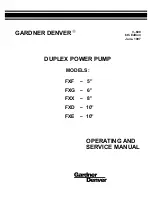
95
January 2004
To send a program, use the cursor as above to select the program and push the SEND RS-232 key. You can
select ALL to send all of the programs in memory. A setting can be turned on to add spaces to the RS-232
output and improve the readability of your programs.
The synchronization protocol used to send data to slower computers is selected from the Setting 14. Setting
14 may be set to XON/XOFF, RTS/CTS, DC CODES, or XMODEM. Transmission can be stopped with either
the XON/XOFF characters or the RTS/CTS wires.
Parameters, settings, offsets, and macro variables pages may also be sent individually via RS-232 by selecting
the LIST PROG mode, selecting the desired display screen, and pushing the SEND key. They can be re-
ceived by pushing the RECV key.
The settings that control RS-232 are:
11
BAUD RATE
12
PARITY
13
STOP BITS
14
SYNCHRONIZATION
24
LEADER TO PUNCH
25
EOB PATTERN
37
NUMBER DATA BITS
The EOB (semicolon) character is not normally sent by the RS-232 port. If it is received by the input port, it will
cause a blank line in the program.
The format of data sent and received for parameters, settings, and offsets is the following:
%
N0 Vnnnnnn
N1 Vnnnnnn
N2 Vnnnnnn
.
.
.
%
The following table shows the use of the N numbers in the output file when offsets are saved to RS-232 or disk.
Tool length:
Tool/function
length wear
diameter
wear
1
001
201
401
601
2
002
202
402
602
3
003
203
403
603
:
:
:
:
:
200
200
400
600
800
The nnn numbers for work offsets are as follows:
Содержание VF Series
Страница 1: ...January 2004...
Страница 7: ...V I January 2004...
Страница 125: ...118 January 2004...
Страница 126: ......
















































